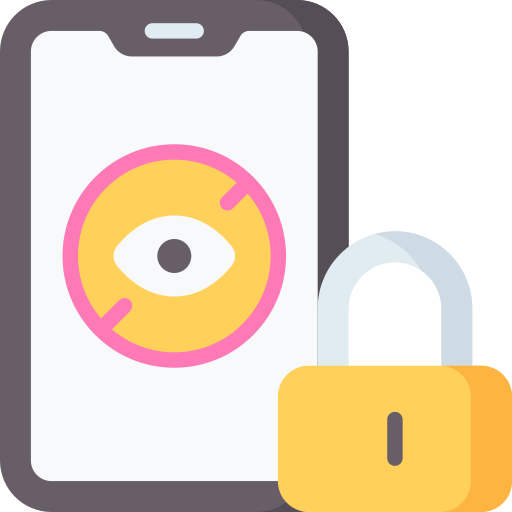Understanding the Challenges of Virtual Learning
Virtual learning presents a unique set of challenges for both students and educators. One major hurdle is the lack of face-to-face interaction, which can hinder communication and make it difficult to establish personal connections. Additionally, the absence of physical classroom environments may lead to feelings of isolation and disengagement among students.
Another challenge is the potential for technological issues or connectivity problems. Not all students have access to reliable internet or necessary devices, making it challenging for them to fully participate in virtual classes. Technical difficulties can disrupt learning and create frustration for both students and teachers.
Furthermore, virtual learning requires a high level of self-discipline and motivation from students. Without direct supervision from teachers, some learners may struggle with staying focused and managing their time effectively. The freedom that comes with remote learning can be both beneficial but also overwhelming if not properly managed.
It is important for educators, parents, and students themselves to acknowledge these challenges in order to find effective solutions that promote successful virtual learning experiences. By addressing these obstacles head-on and implementing strategies tailored to individual needs, we can help ensure that all learners are able to thrive in the online educational environment.
The Importance of Parental Involvement in Virtual Classrooms
Parental involvement plays a crucial role in the success of virtual classrooms. With students learning from home, parents have the opportunity to actively participate and support their child’s education. By being involved, parents can help create a positive learning environment and ensure that their child stays engaged and motivated.
One way parents can be involved is by regularly communicating with teachers. This allows them to stay informed about their child’s progress, any challenges they may be facing, and upcoming assignments or projects. By staying in touch with teachers, parents can provide additional support at home and address any concerns or questions they may have.
Another important aspect of parental involvement is setting expectations for virtual classroom behavior. Parents should discuss with their child the importance of being attentive during online classes, participating actively in discussions, completing assignments on time, and following instructions given by the teacher. Reinforcing these expectations helps students understand the importance of taking virtual learning seriously.
Additionally, parents can create a structured routine for virtual learning at home. Establishing set times for attending online classes, completing assignments, taking breaks, and engaging in physical activity can help students stay focused and organized. By working together with their child to establish this routine, parents provide structure and stability which contributes to a more effective learning experience.
Establishing a Structured Routine for Virtual Learning
One of the key challenges of virtual learning is the lack of structure and routine. Without the physical presence of a classroom and a set schedule, it can be difficult for students to stay focused and motivated. Therefore, it is crucial for parents and caregivers to establish a structured routine for their children’s virtual learning.
The first step in establishing a structured routine is to create a consistent daily schedule. This includes setting specific times for waking up, starting schoolwork, taking breaks, and ending the day. By following a regular schedule, students will develop a sense of predictability and stability in their virtual learning environment.
In addition to creating a daily schedule, it is important to establish clear expectations for behavior during virtual classes. Students should understand that they are expected to participate actively, pay attention to the teacher or instructor, and complete assignments on time. Setting these expectations from the beginning will help students stay engaged and focused during their online lessons.
By implementing these strategies for establishing a structured routine in virtual learning environments, parents can provide their children with much-needed stability and support. A consistent daily schedule combined with clear expectations will not only improve academic performance but also promote overall well-being during this challenging time of remote education.
Setting Clear Expectations for Virtual Classroom Behavior
One of the key challenges in virtual learning is ensuring that students understand and adhere to appropriate behavior in the online classroom. Without the physical presence of a teacher, it can be easy for students to become distracted or engage in disruptive behaviors. Therefore, setting clear expectations for virtual classroom behavior is crucial.
Firstly, it is important for teachers to clearly communicate their expectations regarding participation and engagement during virtual classes. Students should be encouraged to actively participate by asking questions, sharing ideas, and contributing to discussions. Additionally, teachers should emphasize the importance of respectful communication and collaboration with peers.
Secondly, establishing guidelines for turning on cameras and using microphones can help create a more focused learning environment. While some students may feel uncomfortable appearing on camera or speaking aloud, it is essential for them to understand that active participation includes being visible and audible during class sessions.
Lastly, teachers should address issues related to distractions caused by external devices or websites during virtual classes. Clear rules about accessing social media platforms or engaging in unrelated activities should be communicated upfront. Encouraging students to create a dedicated workspace free from distractions can also contribute to better focus and concentration during online lessons.
By setting clear expectations for virtual classroom behavior early on, educators can promote a positive learning environment where students are engaged and committed participants in their own education journey.
Limiting Distractions in the Virtual Learning Environment
One of the biggest challenges in virtual learning is the presence of distractions. Unlike a traditional classroom setting, students are surrounded by various stimuli at home that can easily divert their attention away from their studies. To limit distractions in the virtual learning environment, it is important for both parents and educators to create a conducive space for learning.
Firstly, it is crucial to establish a designated study area free from potential distractions such as televisions or video games. This area should be quiet and well-lit, allowing students to focus solely on their schoolwork. Additionally, parents can help by minimizing background noise and ensuring that other family members understand the importance of maintaining a quiet environment during virtual classes.
Furthermore, technology itself can be a source of distraction. Students may be tempted to browse social media or play online games instead of paying attention in class. To address this issue, parents and teachers should consider implementing software or browser extensions that block access to distracting websites during class time. By limiting access to these platforms, students are less likely to succumb to temptation and will remain engaged in their virtual lessons.
In conclusion
Monitoring and Managing Screen Time during Virtual Classes
One of the challenges of virtual learning is managing screen time effectively. With students spending extended periods in front of their devices, it is crucial to monitor and regulate their screen usage to prevent negative impacts on their health and well-being. Parents and educators can play a significant role in ensuring that students maintain a healthy balance between online learning and other activities.
To begin with, setting clear boundaries around screen time is essential. Establish specific schedules for virtual classes and breaks, allowing students to have designated times away from screens. Encourage them to engage in offline activities such as reading books, playing sports, or pursuing hobbies that do not involve electronic devices. By enforcing these limits consistently, parents can help create a healthier digital environment for their children.
Additionally, incorporating regular physical activity breaks during virtual learning sessions can be beneficial. Encourage students to take short breaks every 30-45 minutes to stretch or move around. These brief pauses will not only provide much-needed rest for the eyes but also promote blood circulation and overall well-being. Parents can actively participate by suggesting simple exercises or organizing outdoor activities during break times.
By implementing strategies like monitoring screen time duration and encouraging physical activity breaks, parents can help mitigate the potential negative effects associated with excessive device usage during virtual classes. It is important to remember that finding the right balance between online education and offline engagement contributes significantly to a student’s overall development and well-roundedness.
Implementing Digital Breaks and Physical Activity in Virtual Learning
One effective strategy for virtual learning is implementing digital breaks and incorporating physical activity into the routine. Sitting in front of a screen for extended periods can be mentally and physically draining, so it is important to provide students with regular opportunities to take short breaks from their devices. These breaks allow them to rest their eyes, stretch their bodies, and recharge their focus.
During these digital breaks, encourage students to engage in physical activities that get them moving. This could include simple exercises like jumping jacks or stretching exercises that can be done right at their desks or in the immediate vicinity. Alternatively, you can suggest taking a quick walk around the room or doing a lap around the house if they have more space available. The goal is to get students up and moving to increase blood flow and energy levels.
In addition to providing physical benefits, incorporating digital breaks and physical activity into virtual learning also has cognitive advantages. Research shows that movement stimulates brain function by increasing oxygen flow and promoting neural connections. By allowing students time for physical activity during virtual classes, educators are supporting not only their overall health but also enhancing their ability to concentrate, retain information, and actively participate in class discussions.
Encouraging Active Participation and Engagement in Virtual Classes
One effective way to encourage active participation and engagement in virtual classes is by incorporating interactive activities. These can include group discussions, online polls or quizzes, breakout rooms for small group work, or even virtual simulations. By providing opportunities for students to actively participate and contribute their thoughts and ideas, they are more likely to stay engaged and invested in the learning process.
Another strategy is to create a supportive and inclusive virtual classroom environment. This can be achieved by fostering open communication channels where students feel comfortable asking questions or sharing their perspectives. Teachers can also encourage collaboration among peers by assigning group projects or facilitating online discussions that require active participation from all students. When students feel valued and included in the virtual classroom community, they are more likely to actively engage with the material being taught.
Additionally, it is important for teachers to provide timely feedback on student work and performance. Regularly acknowledging student contributions through positive reinforcement can help motivate them to continue participating actively in class activities. Providing constructive feedback on assignments or assessments allows students to understand their strengths and areas of improvement, which further encourages them to remain engaged in their learning journey.
By implementing these strategies, educators can foster an environment that promotes active participation and engagement in virtual classes. Encouraging student involvement not only enhances the overall learning experience but also helps develop essential skills such as critical thinking, problem-solving, collaboration, and communication – skills that are crucial for success both inside and outside of the virtual classroom setting.
Supporting Organization and Time Management Skills for Virtual Learning
One key aspect of virtual learning is the development of organization and time management skills. With the absence of a physical classroom and structured schedule, students must take responsibility for managing their own time and keeping track of assignments and deadlines. This can be challenging, especially for younger learners who may need more guidance in this area.
To support organization and time management skills in virtual learning, parents can help create a designated workspace for their child that is free from distractions. This could be a quiet corner in the house or even a separate room if possible. Having a dedicated space helps to create boundaries between schoolwork and personal activities, making it easier for students to focus on their tasks.
In addition to providing an organized environment, parents can also assist their children in creating daily schedules or routines. By setting specific times for different activities such as attending live classes, completing assignments, taking breaks, and engaging in physical activity, students are better able to manage their time effectively. It is important to establish consistency with these schedules so that they become habitual and promote self-discipline.
Furthermore, utilizing digital tools such as calendars or task management apps can greatly enhance organization skills. Students can input assignment due dates into these tools along with reminders to stay on top of upcoming tasks. Parents should encourage their children to regularly review these tools so they are aware of what needs to be done each day. By developing strong organizational habits early on in virtual learning, students will not only succeed academically but also develop valuable life skills that will benefit them beyond the classroom.
Collaborating with Teachers and Peers in the Virtual Classroom
Collaborating with teachers and peers in the virtual classroom is essential for a successful learning experience. Communication plays a crucial role in this process, as it allows students to ask questions, seek clarification, and engage in discussions. Teachers should encourage open lines of communication by providing multiple avenues for students to reach out, such as email or online discussion boards. Similarly, students should actively participate by asking questions and sharing their thoughts with both their teachers and classmates.
In addition to communication, collaboration can also be fostered through group projects and assignments. This not only promotes teamwork but also encourages critical thinking skills and problem-solving abilities. By working together on tasks virtually, students have the opportunity to learn from one another’s perspectives and experiences.
Furthermore, technology provides various tools that facilitate collaboration in the virtual classroom. For instance, video conferencing platforms allow for face-to-face interactions between teachers and students or among peers. These platforms can be utilized for group discussions or presentations where everyone has an equal chance to contribute.
Overall, collaborating with teachers and peers in the virtual classroom enhances the learning experience by fostering communication, encouraging teamwork, promoting critical thinking skills,and utilizing technology effectively
How can parents support virtual learning for their children?
Parents can support virtual learning by being involved in their child’s education, creating a structured routine, setting clear expectations for behavior, and limiting distractions in the virtual learning environment.
What are some challenges of virtual learning?
Some challenges of virtual learning include lack of face-to-face interaction, difficulty staying focused and motivated, technical issues, and limited access to resources.
Why is parental involvement important in virtual classrooms?
Parental involvement is important in virtual classrooms because it helps ensure that students stay engaged and motivated, provides support and assistance when needed, and helps establish a positive learning environment at home.
How can teachers and peers collaborate in the virtual classroom?
Teachers and peers can collaborate in the virtual classroom by using online platforms and tools for communication and group work, participating in virtual discussions and group projects, and providing feedback and support to each other.
How can distractions be limited in the virtual learning environment?
Distractions can be limited in the virtual learning environment by creating a dedicated workspace, turning off notifications and unnecessary devices, and implementing strategies such as time management techniques and the Pomodoro technique.
How can screen time during virtual classes be monitored and managed?
Screen time during virtual classes can be monitored and managed by setting specific time limits for online learning, taking regular breaks, and ensuring that students engage in physical activities or offline tasks to balance their screen time.
What are digital breaks and why are they important in virtual learning?
Digital breaks are short periods of time when students take a break from their screens and engage in offline activities. They are important in virtual learning as they help reduce eye strain, maintain focus and attention, and promote overall well-being.
How can students actively participate and engage in virtual classes?
Students can actively participate and engage in virtual classes by actively listening, asking questions, participating in discussions and activities, collaborating with peers, and completing assigned tasks and projects.
How can organization and time management skills be supported in virtual learning?
Organization and time management skills can be supported in virtual learning by using digital tools and calendars for scheduling and prioritizing tasks, creating to-do lists, setting reminders, and breaking down larger tasks into smaller, manageable steps.
Why is it important to establish a structured routine for virtual learning?
It is important to establish a structured routine for virtual learning as it helps students develop a sense of routine and consistency, improves time management and productivity, and creates a conducive learning environment at home.




